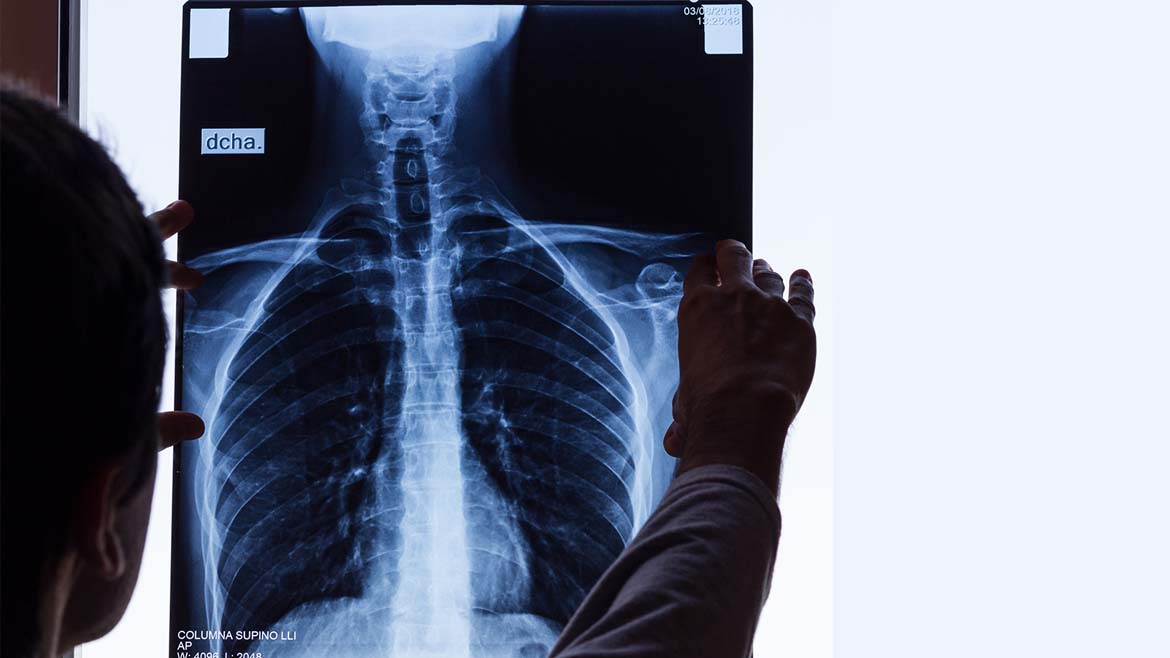
MRI scanners use radio wave energy (like the kind that lets you listen to music on your car stereo) and strong magnetic fields to create detailed images of the body. Ultrasound uses sound wave energy to create images while nuclear medicine uses radioactive substances put into the body to create images and treat diseases. Ultrasound and nuclear medicine utilize different kinds of energy for specialized medical imaging and treatments. A CT scan also uses x-rays, but with the use of computer technology, it can turn a two-dimensional x-ray picture into a 3D image. This kind of energy can travel through things that ordinary light energy can’t. A common chest x-ray uses a higher energy form of electromagnetic radiation.

The different types of imaging that are found in our Radiology Department all have one thing in common: energy! Everything that happens in radiology uses energy of one kind or another. Photo: Technologist working in the Radiography (x-ray) division Photo: Ultrasound technologist scanning an infant Instead you might see a variety of imaging types listed such as Ultrasound, CT, MRI and Nuclear Medicine. Nowadays, if you walk through any hospital’s “x-ray” department, you would see more than just “x-ray” signs. Over the past 120 years, the use of x-rays in medicine has led to the development of other types of imaging and these are used everyday in the care of children. X-rays have been used in medicine since 1895 when the first picture of a hand was taken. Your doctor will then discuss the results with you.Cincinnati Children’s has a department that uses x-rays to take pictures of different parts of patients’ bodies. After the testĪ radiologist will analyze the X-ray images and will share the results with the doctor who requested the exam. You will be exposed to minimal doses of diagnostic radiation. We may ask you to be very still during the several seconds during which we make the image, and we may take more than one image of the part of the body being evaluated. We will cover other parts of your body with a lead apron to protect it from unnecessary exposure to radiation. What will happen during the test?ĭepending on the part of the body to be examined we will ask you to lie on or stand near the X-ray table in a specific position. You may be asked to change into a gown when you arrive at the X-ray site. No special preparation is needed for an X-ray. Bones contain calcium, a mineral that absorbs X-rays, so these show up as white on the image.ĬolumbiaDoctors Radiology provides X-ray services on a walk-in basis in its midtown Manhattan and Tarrytown locations. The X-rays are transmitted to a "detector", creating an image of the inside of the body part being examined. To create an image we direct X-rays - invisible beams of energy that pass through the body - at the part of the body to be examined.

X-rays are useful in diagnosing conditions such as fractured bones, arthritis, pneumonia, bowel obstruction, and in locating foreign objects in the body. Using X-rays we can create a still, two-dimensional image of bones, lungs and other organs, air inside the body, and metal objects. Doctors use X-rays more than any other form of imaging. An X-ray is an imaging procedure that uses low doses of radiation to help diagnose disease or injury.


 0 kommentar(er)
0 kommentar(er)
